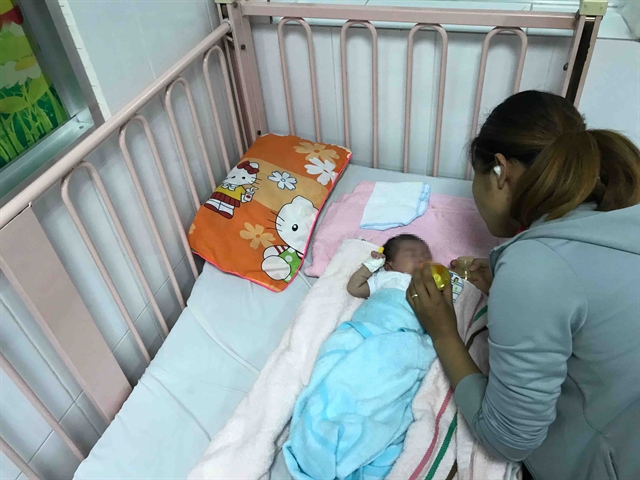 Society
Society

Doctors at Từ Dũ Hospital in HCM City suspected a foetus had a serious but rare congenital heart defect called transposition of the great arteries, which can be detected between 22 to 24 weeks.

|
| A baby with transposition of the great arteries is being treated at the city Paediatrics Hospital 1. VNS Photo Gia Lộc |
Gia Lộc
HCM CITY — Doctors at Từ Dũ Hospital in HCM City suspected a foetus had a serious but rare congenital heart defect called transposition of the great arteries, which can be detected between 22 to 24 weeks.
In a baby with this condition, the two arteries carrying blood from the heart to the lungs and body are reversed.
The pregnant woman from Long An Province was transferred to Paediatrics Hospital 1 for confirming the diagnosis by doing ultrasound of the fetal heart.
Once the condition was confirmed, doctors from the Paediatrics Hospital 1 counselled the woman and provided a post-delivery treatment regime to doctors at Từ Dũ.
Until the delivery, doctors from the two hospitals closely supervised the physical health of mother and baby and her mental health to ensure the foetus’ growth was adequate for delivery and treatment later.
In the last month of pregnancy, the Paediatrics Hospital 1 doctors checked the foetal heart again.
On August 6 the woman delivered at Từ Dũ. The baby girl turned pale and needed immediate intervention.
Từ Dũ doctors informed the Paediatrics Hospital 1 and sent her there for treatment.
There, doctors gave her medicines, but she showed no signs of improvement.
On August 8 they decided to perform a surgery lasting nine hours by a team of 20 doctors and nurses.
It was successful and after 11 days in the neonatal intensive care unit the baby has recovered and will be discharged soon.
Dr Nguyễn Đức Tuấn of the cardiology unit at the Paediatrics Hospital 1 said: “The co-ordination [between hospitals] started at the beginning of this year. So far 200 pregnant women have been transferred to the hospital for ultrasound. Ten of them had surgeries. If there is no co-ordination, the surgeries will not be successful.”
On January 29 the city's Department of Health said doctors at the two hospitals also worked together to perform ex utero intrapartum treatment to save an infant with a large tumour extending from chin to neck.
The City Children’s Hospital has collaborated with Từ Dũ and Hùng Vương, the two large public obstetrics hospitals in the city, for diagnosis and treatment of 500 patients before and after delivery between January last year and February this year.
This has also helped safely transfer infants from the obstetrics hospitals, Dr Hồ Tấn Thanh Bình, head of neonatal intensive care at the City Children’s Hospital, said.
More than 100 infants with congenital defects have been transferred in that period.
At a conference on providing training by doctors at city-level hospitals to district-level obstetricians and paediatricians held in HCM City in March, Bình said nearly 10,000 babies are born prematurely each year, with Từ Dũ, Hùng Vương and Mekong hospitals having the largest number.
Premature birth and congenital defects are leading causes of infant mortality, with 13 out of 1,000 live births in Việt Nam dying, he said.
“The co-operation has helped increase the rate of saved infants and reduce hospital stay.”
It has also helped hospitals share data for research.
Assoc Prof Dr Tăng Chí Thượng, deputy head of the city's Department of Health, said the department has instructed these hospitals to strengthen co-ordination to reduce the mortality rate among mothers and infants. VNS




